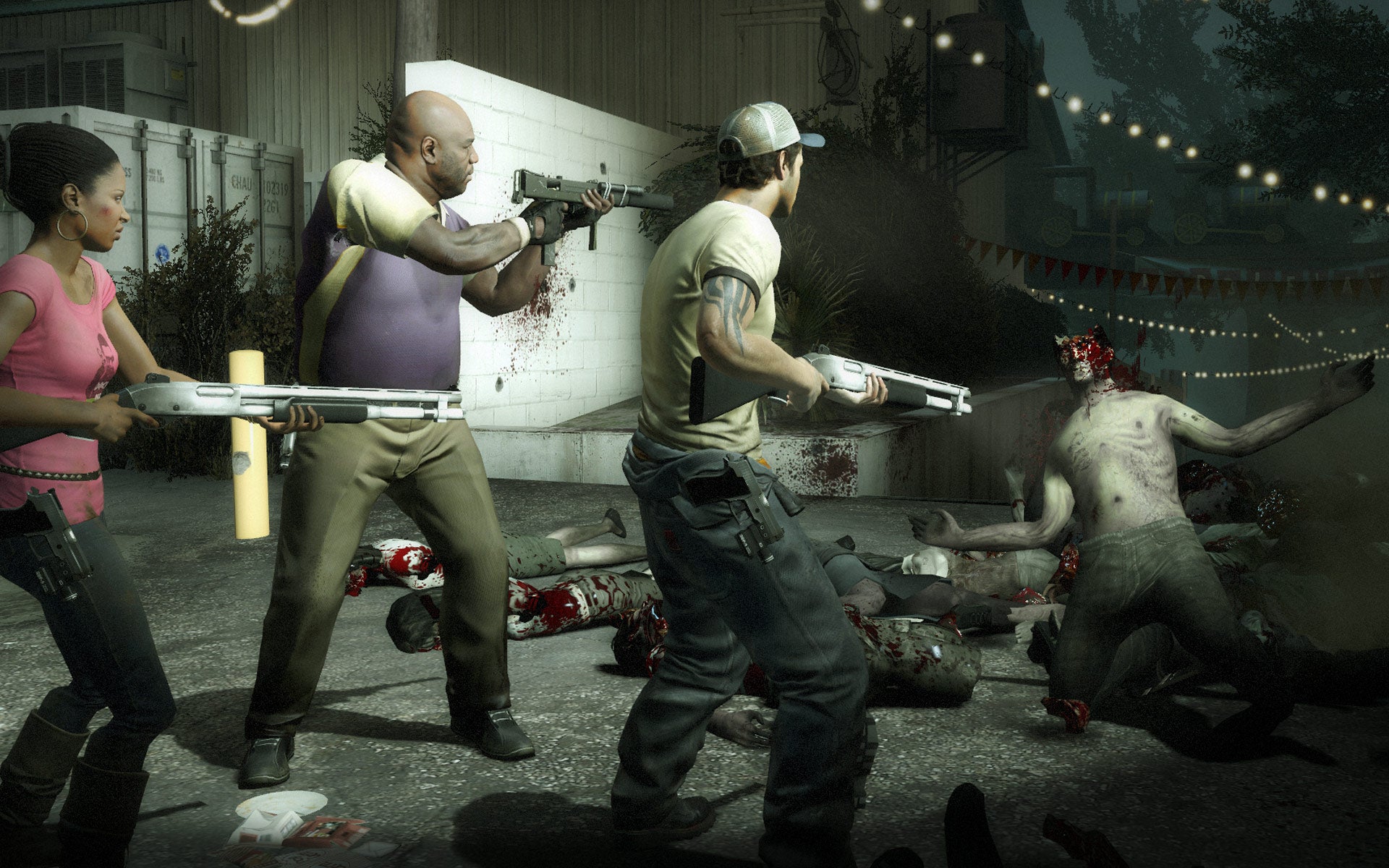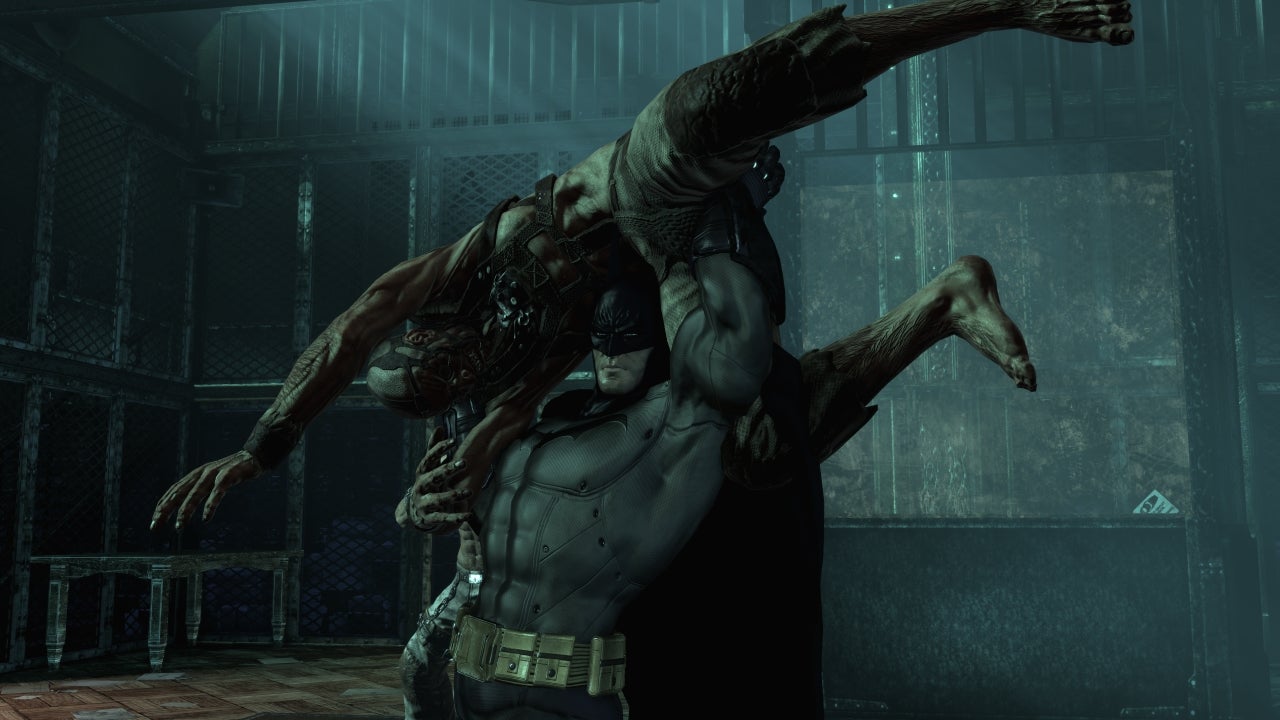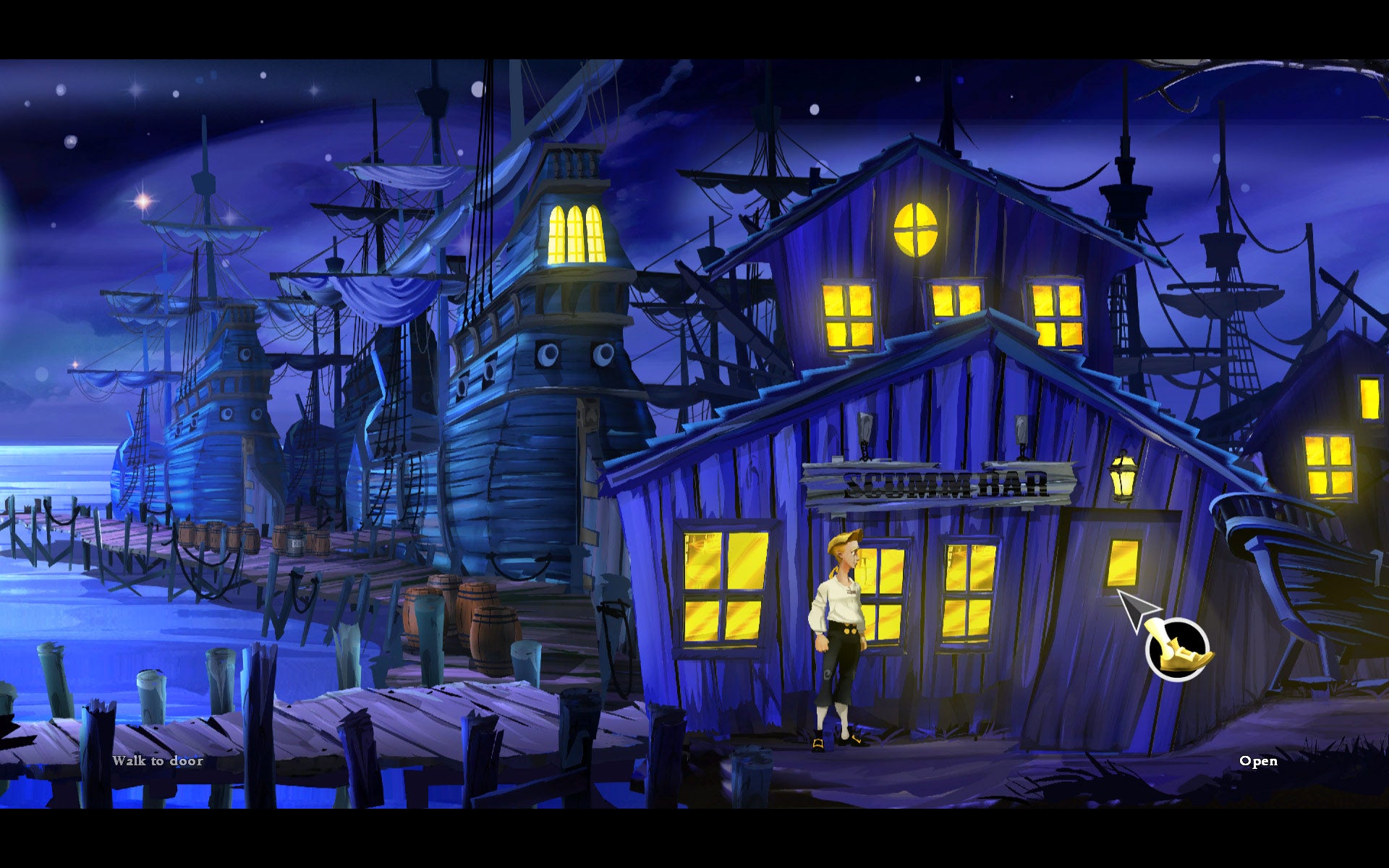As always, these Time Capsules aren’t intended to be a definitive ‘best games of X year’ list. Instead, they’re the games from that year we’d still recommend people play today, either because they remain one of the best examples of their genre, or they’re games that contain a valuable lesson for the future. There are also some additional rules we’ve set ourselves as well: it must be this specific version of the game we’re recommending, which means we’d have to have a very good reason not to pick a remaster or remake where applicable, and we’re also basing our picks on the year they came out on PC, not the date they might have first become available on other platforms. Of course, with only a limited number of slots to fill in our Time Capsule, there will no doubt be plenty of worthy contenders we’ve accidentally consigned to the bin due to lack of space. If you think we’ve missed something important off the list, then tell us about the one game you’d save from 2009 in the comments below.
Minecraft
James: Shame about the bloke who created it. But if we’re talking games that aren’t just good, but significant… I mean, come on, it’s Minecraft. Even under its current Microsoft ownership, it’s one the greatest indie success stories ever, serving for other a decade as a compelling survival/creative adventure for regular players, a genuinely non-cynical entry point into games for the inexperienced, and a prime example of everything right with PC gaming in particular. To give just one example: all those battle royale games now making megabucks? Wouldn’t exist without Minecraft’s mod support and DIY community popularising the concept. Some of Minecraft’s more central mechanics, like crafting and building, have influenced a generation of survival games as well. It’s clear why: this is risk vs. reward at its finest, with the complexity and ornateness of your creations rising in direct correlation with the ambition and bravery of your resource-gathering missions. That said, even the most basic trips to collect wood or pelts – the kind that would be a filler quest in a bad MMO – feel worthwhile, as you can return to camp knowing you’ll soon turn your prize into something brilliant.
Left 4 Dead 2
Hayden: I love slicing and dicing through some undead corpses on a sunny Sunday afternoon. Left 4 Dead 2 makes that slicing simply sublime, with every melee swipe cutting through limbs in a gory spectacle. You’re rarely just faced with one or two zombies, though. Left 4 Dead 2 likes to throw endless hordes in your direction, which always come along in the most peaceful moments to crank the intensity up by ten. Every stage becomes a chaotic scramble to the next safe room, and it was in those desperate, difficult moments that I fell head over heels for Left 4 Dead 2. I’ve played those campaigns dozens of times since, but it’s the Steam Workshop support that keeps me coming back. I reinstalled L4D2 while writing these words to get my brain working and quickly found myself shooting down from the battlements of Helm’s Deep. I was a velociraptor with an AK-47. Another Velociraptor was nearby wielding a sword and shield. Shrek was charging around on the battlefield. Need I say more? Thanks to the seemingly endless number of mods, Left 4 Dead 2 is a game that only improves with age, making it the prime candidate for a time capsule.
Mirror’s Edge
Liam : “Its movement is just like Mirror’s Edge”. You hear that a lot these days, don’t you? Whenever a game plonks you behind the eyes of a protagonist and lets you do a nice wall run. “It’s just like Mirror’s Edge!” Why though, in a post-Apex and Titanfall 2 world, do we still use DICE’s parkour experiment as shorthand for this specific set of movement mechanics? It’s because, I think, Mirror’s Edge is such a complete thing. Unlike other games that have cribbed from it in the intervening years, Faith’s inaugural adventure focused on momentum and flow above all else. Yes, there’s some wonky combat to be found here (this was still the late-2000s, after all) but to lose even a smidgeon of speed feels as much of a catastrophic failure as tumbling onto the streets below. Run! Jump! Slide! Roll! The fundamental building blocks of fluidity are as fully realised here as they’ve ever been. You can hit the credits in only a handful of hours, but to consider that the end is kind of missing the point? Multiple replays reveal subtleties in Faith’s move set, hidden abilities reserved only for those looking to discover an enlightened sense of motion. Expert players don’t just move through these pristine rooftops. They roar across them like a river after a hurricane. Relentless and determined. A force of nature in red running shoes. “It’s just like Mirror’s Edge!” What an evocative comparison. No wonder we keep using it.
Batman: Arkham Asylum
Katharine: I never ended up playing Batman: Arkham Asylum at the time of its release. I only got myself a PC capable of running the darn thing around five years later, a year or two before Rocksteady was due to conclude their excellent Batman series with (the actually quite good) Arkham Knight (go on, fight me, I dare ya). But even in the face of the studios’ bigger and more spectacular Batman games, Asylum continues to hold its own, offering a laser focused investigation into its famous inmates, as well as arguably the best and most thrilling third-person combat system that games has ever seen. You can tell Rocksteady really know their stuff with Batman, too. There is so much love for both Batman the character and his legacy of comics in Arkham Asylum, and the fact they got the Animated series’ Big Chin himself, Kevin Conroy, in for voice acting duties (along with Mark Hamill for The Joker, and Arleen Sorkin for Harley Quinn) was just the icing on the big bat cake. It’s the perfect case study of how to do a superhero game justice, and they absolutely nailed everything about what it is to be the caped crusader, from the way you moved around the facility, grapplin’ and glidin’ and sneaking through the rafters, to how you biffed and bopped enemies with your big bat punches and big bat chin. I don’t know why I have such strong feelings about the cut and size of Bruce Wayne’s chin, but there we are. Alas, while the 2009 version has since been replaced with the 2010 Game Of The Year Edition on PC, the only thing the latter really offers is four extra challenge maps. The original, for those who still own it, is more than worthy of preservation, and should be required reading for anyone trying to make a modern day comic book superhero game.
The Secret Of Monkey Island: Special Edition
CJ: I have a terrible confession to make. I never played the original The Secret Of Monkey Island from 1990. Oh sure, I played Monkey Island 2: LeChuck’s Revenge together with my sister on my dad’s computer when we were kids. We thought it was a hilarious old time, but we never did find a copy of its predecessor on floppy disk anywhere. I moved on to other LucasArts games such as Indiana Jones And The Fate Of Atlantis, Day Of The Tentacle and Sam & Max Hit The Road that are now dear to me instead. At the back of my mind for the intervening decade-and-a-bit was always some regret about missing out on The Secret Of Monkey Island though. Lo, then came the age of the remaster. The Secret Of Monkey Island: Special Edition’s graphical overhaul is how I think my brain in 2009 would have remembered the game if I’d played it back in the early 90s. Thankfully, ‘mighty pirate’ Guybrush Threepwood was now voiced by The Curse Of Monkey Island’s excellently innocuous Dominic Armato, which is a brilliant bit of added continuity between the later games and the Gilbert years. LucasArts realised too that their classic but fiddly SCUMM verb controls weren’t going to win new friends for Guybrush in the 21st century – blasphemy! The revamped contextual controls and inventory are straightforward, and free up the rest of the screen so you get the most out of the snazzy graphics. You don’t even have to play it with all the bells and whistles of a 2009 game if you don’t want to, because the original The Secret Of Monkey Island is still there. Both versions can be easily swapped between if that’s what you prefer. All the changes seem right to me so, while I could’ve played through the original and fulfilled tiny-me’s wish from decades ago, I didn’t. I finished the Special Edition with my wife, who’d never played any Monkey Island games before. It started a tradition of playing adventure games together that we still hold to. We’re definitely going to replay this and Monkey Island 2 Special Edition: LeChuck’s Revenge again before Return To Monkey Island comes out later this year.
Plants Vs Zombies
Ollie: Plants Vs Zombies is, in my opinion, the greatest tower defence game of all time. I defy you to look upon the dewy eyes and placid smile of the bobbing Sunflower plant in Plants vs Zombies, and not fall instantly in love. Plants vs Zombies is the PopCap-est of PopCap games. It’s an absolute tour de force of charm, silliness and colour, sprinkled with good ideas that help inject new life into an oversaturated, overly formulaic genre. The rules are simple: you must stop the zombies from reaching your house, and you can only do this by plopping down plants in your garden. There are plants that shoot peas at enemies; there are chompers that gobble them up if they get too close; there are wall-nuts that slow down the zombs’ progress; there are garlic plants that force zombies into other lanes. In fact, there’s a total of 48 distinct plants which you can combine in all sorts of wonderful ways to battle the 25 different zombie types on offer. Throw in the random minigame levels, the different locales which introduce important new mechanics; the ever-present antics of the legendary Crazy Dave, and most importantly the absolutely spectacular soundtrack from Laura Shigihara, and… And I start to realise I’d rather replay PvZ than keep writing this. Bye.
Emerald City Confidential
Rebecca: I was going through a Wizard of Oz phase in the late 2000s: Wicked had recently opened in London’s West End and had caused a resurgence of interest in the setting, particularly among those of us who were queer and nerdy. I tore through every Oz story that presented itself — the musical, the novels by Gregory Maguire that inspired it, L. Frank Baum’s original 14-part children’s book series, the classic 1939 movie — before scouting for further re-imaginings. Enter Emerald City Confidential, a point-and-click adventure game that scratched my every late-teenaged itch. Aside from the obvious appeal of the setting, Emerald City Confidential was a pitch-perfect ’40s-style hardboiled mystery: another genre I was getting obsessed with at the time, but which is quite rarely blended into a backdrop of high fantasy. The cartoonish appeal of the visuals was backed up by solid writing with an obvious deep respect for Ozian lore, and which knew exactly how far to take itself seriously and when to acknowledge what a huge goof the whole thing was. Crucially, Emerald City Confidential is the title I still gesture at to this day when asked if point-and-click games can ever recover from their sudden downward spiral in the late ’90s. It avoids all the pitfalls that gutted my favourite childhood genre — ill-advised 3D graphics, unnecessarily obtuse and frankly stupid puzzle solutions — and was just a fun, solid mystery that was actually a pleasure to solve, in a lovingly crafted world that was a joy to inhabit. It’s vibrant proof that classic point-and-clicks did survive, and indeed continue to thrive, on the indie scene.
Zeno Clash
Alice0: Zeno Clash comes in with confidence, energy, and no explanation. We’re dropped into the midpoint of the chronological plot and, more than that, we’re dropped into a world with no familiar reference points. It’s fantasy, I suppose? Has magic, inhuman beings, and maybe 16th century Earth levels of technology? But it’s not like any other fantasy world I’ve visited. Zenozoik is a lurid vision which is closer to Hieronymous Bosch, surreal comics, and Antoni Gaudí than, you know, Lord of the Rings. It is such an interesting place with such an odd and tragic mood, leading to an unpredictable adventure full of delightful discoveries and little tragedies. One boss battle is a sniper duel against an assassin who wears a crab as a mask and parachutes bomb-carrying squirrels down from his sniper’s nest atop an elephantine sauropod. Another boss is a skull-wearing one-man band with chicken corpses swinging from his drum. Oh, right, yes, fighting. It’s a first-person beat ’em up. Think Double Dragon with a few more moves. It’s fun enough! Doesn’t offer a system of violence full of thrilling nuance to discover, but is quite fun as you bam out combos, throw a birdman into a crowd, or break a sledgehammer across a sloth’s head. Does get a bit frustrating in points. But that’s fine. It’s an amazing adventure. ACE Team have released a sequel and have another game in the world coming this year, Clash: Artifacts Of Chaos, but I’d still point you here to start.
Saints Row 2
Ed: Saints Row 2 is tame when compared to its quirkier successors. While they fire dubstep cannons and slap each other with wobbly dildobats, Saints Row 2 holds Glocks sideways because it’s what gangsters…do? The game takes Grand Theft Auto and repurposes the open world crime o’thon into a seven out of ten. But the game is a seven out of ten that’s laser-focused on fun; it’s GTA without the wanky trimmings. One mission sets you alight and tasks you with driving an ATV through checkpoints as a timer ticks down. Anything you crash into not only erupts in a fireball but extends your timer. Ragdolling your body off car bonnets in the Insurance Fraud mode nets you dollar bills, a bit like the fleshy equivalent of Burnout’s excellent Crash mode. And there are other, littler things too. There’s a zombie slaying game within the game. You can buy businesses to supplement your income, which is immensely satisfying. And there’s strong drop in, drop out co-op to double the silliness. Saints Row 2 may not be groundbreaking or all that memorable, really, but I admire its dedication to above average entertainment.
Braid
Alice Bee:









